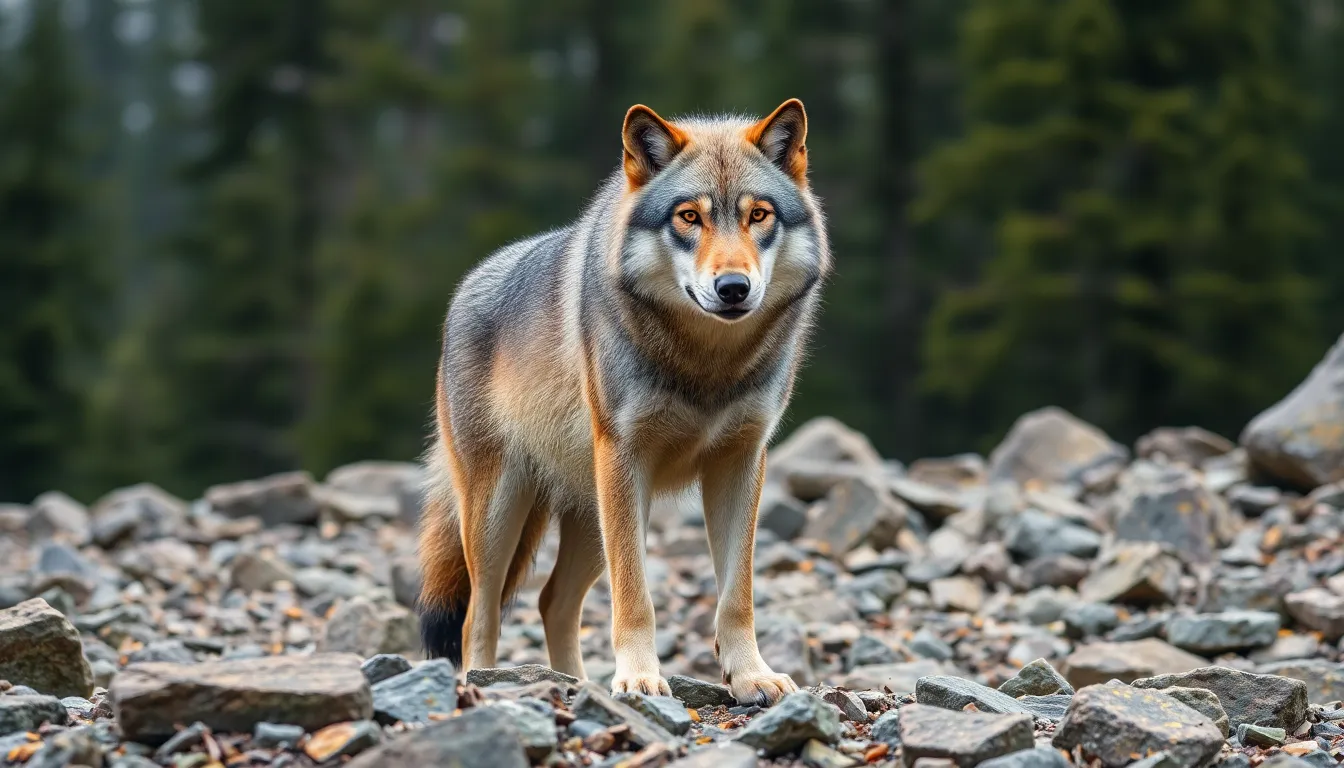Wolves are the ultimate wild canines, roaming the forests with a majestic presence that’s both awe-inspiring and slightly intimidating. But have you ever wondered how much these magnificent creatures actually weigh? Spoiler alert: it’s not just a “pound or two” situation. The answer might surprise you and could even make you rethink your next gym session!
Table of Contents
ToggleOverview Of Wolf Species
Wolves belong to the Canidae family, which also includes foxes and domestic dogs. Multiple subspecies exhibit variations in size, appearance, and behavior. The gray wolf, the most widely known, can weigh between 50 and 110 pounds. It commonly inhabits regions across North America, Europe, and Asia, showcasing adaptability to various environments.
Timber wolves, a variation of the gray wolf, primarily reside in Canada and the northern United States. Their weight ranges from 60 to 120 pounds, influenced by their habitat and prey availability. Arctic wolves, known for their striking white coat, typically weigh between 75 and 100 pounds and thrive in the harsh conditions of the Arctic tundra.
The red wolf, an endangered species, weighs less than other subspecies, ranging from 45 to 80 pounds. Once widespread in the southeastern United States, this wolf faces significant conservation challenges. In contrast, Mexican gray wolves weigh between 60 and 90 pounds, inhabiting the mountainous regions of the Southwestern United States and parts of Mexico.
Indian wolves, found in the Indian subcontinent, display variations in size as well, weighing around 50 to 85 pounds. Social structures among these species often include intricate pack dynamics, influencing their hunting and foraging behaviors. Observing these adaptations provides insight into their ecological roles and survival strategies.
Each subspecies contributes to the rich diversity of wolves, showcasing their evolution and adaptations to different environments. Understanding the weight and characteristics of these species highlights the importance of conservation efforts needed to protect their populations.
Factors Influencing Wolf Weight

Wolf weight varies due to several key influences, including age, diet, and geographic location.
Age And Development
Age significantly impacts a wolf’s weight. Pups tend to weigh around 5 to 10 pounds at birth. Rapid growth occurs, with young wolves reaching weights between 40 and 70 pounds by 6 months. Adults typically achieve full size around 2 to 3 years. Maturity allows for the greatest weight among males and females. Juvenile wolves tend to weigh less until fully grown, mainly influenced by their growth stages and development.
Diet And Nutrition
Diet plays a crucial role in determining wolf weight. Wolves primarily consume large prey such as deer and elk, providing high protein levels necessary for muscle maintenance. Scavenging behavior lets them adapt to food availability, with resources influencing overall body condition. Seasonal changes in food sources can cause weight fluctuations. Evaluating diets ensures they receive adequate nutrition, directly affecting their health and size.
Geographic Location
Geographic location influences wolf size due to environmental conditions. Wolves in colder regions, like Arctic wolves, often weigh more to maintain body heat. Habitat availability also affects prey size and density, leading to different weight averages among species. In contrast, wolves in warmer climates might weigh less due to variations in available resources. Observing these regional adaptations clarifies how location directly correlates to wolf weight.
Average Wolf Weight By Species
Wolves exhibit significant weight variations across species, influenced by factors such as habitat and dietary needs.
Gray Wolves
Gray wolves stand out as the largest wolf species. Males typically weigh between 70 and 110 pounds, while females range from 50 to 90 pounds. This species’ adaptability allows it to thrive across diverse environments, including forests and tundras. Hunting large prey contributes to their robust body size, enabling them to sustain themselves effectively. Geographic variations also impact weight; gray wolves in colder regions tend to be larger due to the need for greater fat reserves.
Red Wolves
Red wolves represent a smaller species, with adults weighing between 45 and 80 pounds. This variation is essential to their survival, as their size enables agility in the dense forests of the southeastern United States. Conservation efforts remain critical, as the red wolf population faces numerous threats. They primarily hunt smaller prey, which influences their weight compared to larger wolf species. These factors play a significant role in their ecological niche, making their weight all the more fascinating.
Arctic Wolves
Arctic wolves adapt to harsh environments and typically weigh between 75 and 100 pounds. Their thick fur coat and body fat help them endure the extreme cold of the Arctic tundra. Males often bulk up to maintain energy levels during scarce food periods. Foraging on large herbivores is crucial, especially in winter months when prey becomes limited. The Arctic wolf’s weight plays a vital role in its ability to thrive in these challenging conditions, illustrating the remarkable versatility of wolf species.
Measuring Wolf Weight
Determining a wolf’s weight involves several methods aimed at accuracy and consistency. Direct weighing on a scale remains the most reliable approach, particularly in controlled environments like wildlife rehabilitation centers. Researchers often use capture techniques to safely weigh wolves in the wild, allowing data collection on a variety of ecological factors. Tracking collars equipped with weight sensors provide continuous data, enabling studies on how weight changes in different environments.
Methods Used
Various methods for measuring wolf weight exist, each with unique advantages. Capturing wolves humanely allows for precise weight measurements. The use of remote cameras assists by allowing observation of wolves and estimating size through visual cues and measurements. GPS tracking systems can also provide data on weight fluctuations over time. Regular monitoring enhances understanding of overall health and diet, contributing to ongoing conservation efforts.
Challenges In Accurate Measurements
Measuring wolf weight presents challenges that researchers must address. Stress during capture affects weight, often leading to temporary fluctuations. Variability in measurement methods can result in inconsistent data. Wolves’ natural behavior complicates accurate assessments, as their movements in the wild can impede perfect conditions for weighing. Additionally, environmental factors can alter a wolf’s weight, such as seasonal changes in food availability. Understanding these challenges remains vital for effective research and conservation strategies.
Wolves are fascinating creatures with a diverse range of weights that reflect their adaptability and ecological roles. Understanding the weight of different wolf species not only highlights their physical characteristics but also emphasizes the importance of their conservation.
As these majestic animals continue to face challenges in the wild, awareness of their needs and behaviors becomes crucial. By appreciating the complexities of wolf weight and the factors that influence it, individuals can contribute to efforts aimed at preserving these remarkable canines for future generations.









